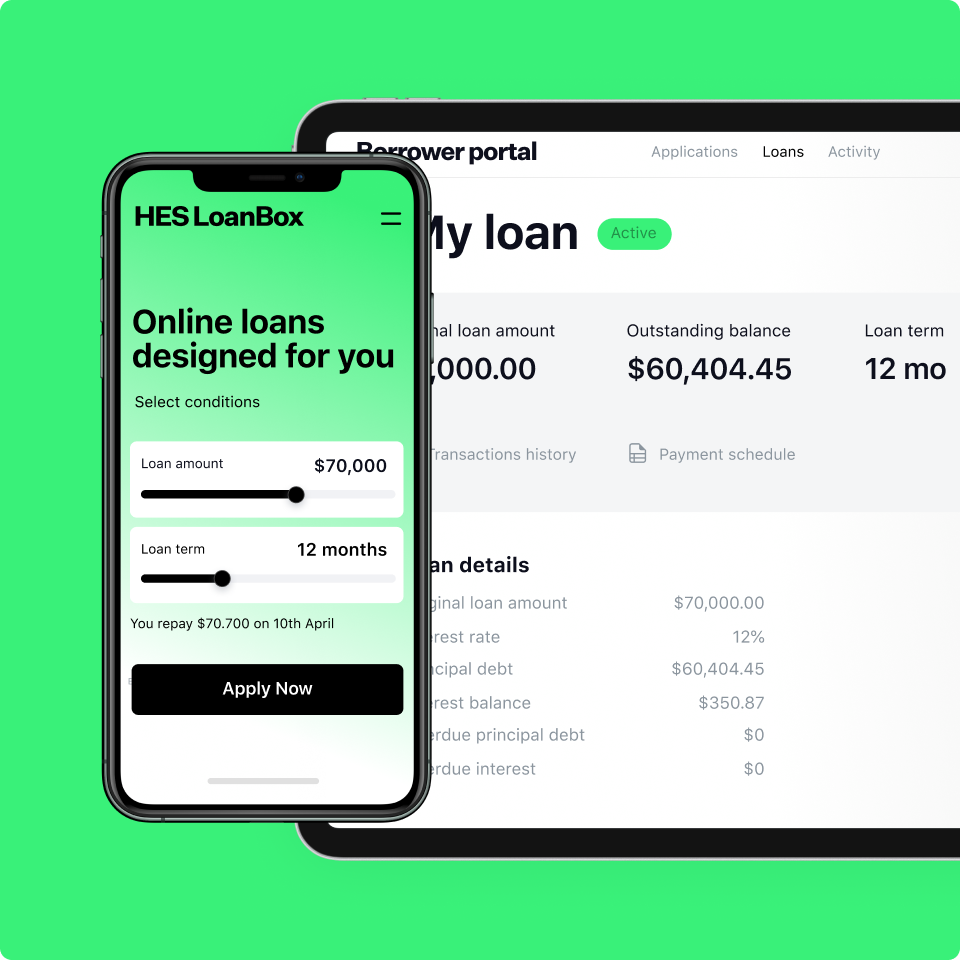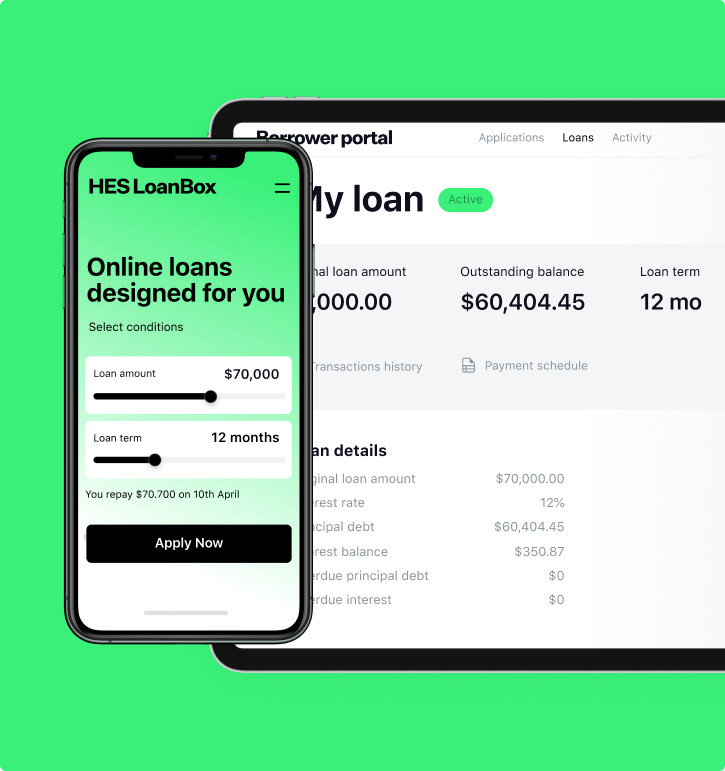In 2020, the loan origination market was valued at approximately $3.8 million (USD), with a CAGR growth of ~12.88%. It is expected to hit $6.2 million by 2026. Further financial instability caused by global political events, including inflation and economic crisis, could indicate a need for an increase in both long- and short-term lending to ride out the hard times. In turn, market demand for LOS systems (or lending origination systems) that effectively manage loan origination without raising business risk is rising. However, not every business knows what to look for when choosing effective LOS vendors to update or create systems for their current lending software needs.
What is loan origination software?
How to Choose SME Lending Software and Stay on BudgetThe best loan origination systems are those that deliver for your business—meets consumer needs, improves business processes, and has a positive impact on your business. But what is a LOS and what to look for when choosing one?
A lending origination system, or LOS system for short, is a software tool that takes care of the entire loan process from application to document processing to credit scoring and the borrower receiving funding. An LOS system automates the process, streamlining it so the business is able to operate more effectively. If done right, the loan origination software can:
- Reduce the risk of lending and ensure policy and regulation compliance
- Improve the prospects of the organization’s credit portfolio
- Reduces the time it takes to approve a loan and increases client satisfaction
What does an LOS system do? Loan origination soft examples
It’s clear that consumer loan origination software makes the process easier for both clients and the business, but how exactly does it complete this task?
No matter which of the most popular commercial loan origination tools vendors you’re looking at, you’ll notice a couple of things in common with their offerings. Any LOS system worth its salt will consist of:
- Loan process management—Tools to manage loan origination and a process for fulfilling the loans
- Risk management—Software to correctly calculate and manage costs for loans
- Compliance—Document management software to ensure document compliance
- Integration—Elements that allow it to integrate with other software and third-party systems
- Database systems—Ensure you have access to the data you need when you need it.
- Usability—Every system you create should be accessible and easy to use by your team and clients.
- Analytics components—Track your stats and ensure your business functions as it should.
Let’s take a closer look.
No.1 Loan process management tools
The core functionality of your consumer lending solution. This can include POS (point-of-sale), process management tools, workflows, document management, status updates, and more. Essentially, this allows you to fulfill the entire loan process from A to Z—receiving the application, processing, underwriting, closing, follow-up, etc. Having robust capabilities that meet your specific needs is essential to ensuring you are able to automate your business processes.
No.2 Risk management tools
How do you know if you client is eligible for a specific financial offering or what is the correct repayment level in this case? The answer is risk management and pricing software. By onboarding smart tools, such as a pricing engine, you can assess the correct loan-to-risk ratio and improve your chances of entering healthy loans that are likely to be repaid.
No.3 Compliance capabilities
All financial tools must have software that manages their documentation and compliance. While in the past, document management and compliance checks took place in-branch, now they do so behind a screen. If you don’t want to be a brand your clients are complaining about, then it’s time to onboard some up-to-date document management software that takes care of the process seamlessly. This part of your software can range from KYC and AML checks to uploading signed documentation for loan approval. At the same time, you’ll need to ensure sufficient measures that your client’s personal information is kept safe and secure.
No.4 Integration software
No matter which element of the financial sphere you currently operate in, you’ll know that being able to integrate with other software and tools is essential for your business to run smoothly. Your loan origination software is no different. Being able to integrate with third-party systems and APIs allows you to expand your business and ensure a seamless service for your clients. For example, perhaps you’d like to onboard a merchant cash advance solution alongside your regular loan system—this may be possible by connecting with a third-party supplier. Connecting with third-party apps and APIs allows you to configure and customize your offering while delivering the best service possible for your clients.
No.5 Database systems
Packed with everything you need to ensure your business functions just as it should. Your database system should consist of a diverse database of data about your clients, your business, and the wider market. For example, it should include consumer data (demographics, credit history, etc.), collaterals (insurance, etc.), relationships (subsidiary, family, etc.), and financial capabilities (ratios, and balance sheets, etc.). Having access to data and being able to use it empowers your business to operate better.
No.6 Usability
Whether it’s designing the perfect UX for your admins or clients, to have all the tools you need for a responsive interface, the usability of your product for its audience matters. You can have all the tech imaginable, but if your team or clients can’t use it, it isn’t worth much. Instead, focus on a solution that priorities usage just as much as the tech behind it.
No.7 Analytics components
If you’re already providing lending services, you’ll know there is a sea of data out there ready to be molded into valuable data. By adding an analytics component to your solution, you can quickly and accurately analyze your business processes and better manage risk. Such tools give you dashboards where you can track data and use it to make decisions within your company.
Choosing your private or commercial LOS vendors
Now that we know what an ideal system should contain, here comes the hard part: choosing a vendor that is able to do the job. So, what should you look out for?
There is no one-size-fits-all when it comes to finding the right vendor for you. Like any business decision, the top loan origination systems are the ones that integrate seamlessly with your company’s business goals and that you feel 100% comfortable working with. That said, here are some points to consider when choosing a shortlist of potential commercial loan origination software vendors.
1. Look at your internal strategy
Forget about the bright lights and baubles. Instead, concentrate on your business’s actual needs. By focusing on the strategy and goals you want to achieve, you’ll be less likely to be misled by gimmicky software solutions that may be entertaining but costly and add little value to your business.
2. Read comments and ask around about your vendor
You’ll likely have industry contacts, see what they say about your vendor and learn about their experience with them. While no vendor is perfect, by asking around and reading online comments/feedback, you can learn a lot about if this vendor is for you.
3. Get in touch and see if they’re a match
Almost any vendor worth their salt will tell you quickly if they’re a good or bad match for your business. That first contact is a good indicator of how the overall relationship will progress. You can also test the waters in terms of their flexibility, availability, and the feasibility of them being able to complete the project.
4. See their software offering and processes
Digital Loan Origination Process: Integrity and Automation Although a wide range of services may be tempting, services that specialize in delivering one type of product, for example, loan software, may be more adept at understanding your needs and building a tailored solution. Look for a vendor with robust industry knowledge as well as a solid tech stack. At the same time, ask about their work processes, how they plan to complete the work, milestones, and success markers along the way to ensure they align with yours.
5. Review certifications
The financial industry is a high-regulated sector that requires that you tick all your boxes. Just as you would with your business processes, it’s important to make sure your vendor is able to as well. Check for any certifications they carry or are offering compliance with, for example, ISO 27001 may be one to watch.
Top loan origination systems: next steps
You’re now ready to take the next step of finding your perfect match for your LOS system. Updating or developing a loan origination software is a massive step for any business, and we hope you find the right partner to help you along your way.
If you’re ready to start now, why not get in touch with HES. As an experienced and trusted loan origination software provider, we are happy to assist you in building your ideal solution. Get in touch with our tfeam now to schedule a demo and learn how our tools work in action.



















